Love movies? Then the Eight Sequences Plot Structure might be right up your alley. This structure helps you plot your novel (or screenplay) into eight segments, much like the old Hollywood screenwriters used to do in the era of reel-to-reel films (more on that in a bit).
Want to give it a try? Fasten your seatbelts (as Bette Davis says in All About Eve) and get ready for a whirlwind tour of how you can incorporate this Hollywood hack into your novel writing.
What is the Eight Sequences Plot Structure?
Back in the dark days before the internet and smartphones, people used to watch movies projected from reels onto enormous screens in ornate theaters. Each two-hour movie needed roughly eight reels of film, which were changed by a projectionist.
In these early days, switching from one reel to another took time during which the audience stared at a blank screen. Screenwriters began to write the stories in 15-minute increments — roughly the length of time each reel could play — with cliffhangers and other devices built in to keep audiences glued to their seats even between reel changes.
The screenwriters of that era also realized the eight sequence structure (or eight reel structure) fit nicely into the traditional three-act structure so beloved by Hollywood’s most legendary storytellers.
Here’s a quick recap of the three-act structure with the eight sequences added:
Act One
- Beginning of the story
- Sequences 1 and 2
- Comprises 25% of the story
Act Two
- Middle of the story
- Sequences 3, 4, 5, and 6
- Comprises 50% of the story
Act Three
- End of the story
- Sequences 7 and 8
- Comprises 25% of the story
Who is the Eight Sequences Plot Structure for?
While many fiction writers will benefit from using the Eight Sequences Plot Structure, this plot structure is best for straightforward stories without a lot of subplots. Those who write action, romance, and historical stories will likely find it more helpful than those who pen intricate mysteries, science fiction, or fantasy tales.
Plot Points of the Eight Sequences Plot Structure
The Eight Sequences Plot Structure in Plottr has two plotlines — the main line and subplot line — and, as expected, eight scene cards.
Remember: we’ll put the eight sequences into the overall three-act structure as outlined above. Let’s explore, using examples from the hit musical, La La Land.
Act 1
This act has two sequences, and contains the first quarter of your story.
Sequence 1: Status Quo and Inciting Incident
This sequence introduces us to the protagonist and shows them in their ordinary world. This is where you hook the reader, drawing them into the story and connecting them with the hero or heroine.
The first sequence ends with an inciting incident — a significant event that can’t be resolved on its own.
Example: In La La Land, the story starts by introducing Mia, an aspiring actress.
Sequence 2: Predicament and Lock In
The second sequence brings into focus the central conflict, which the protagonist might attempt to figure out on their own — often with disastrous consequences.
Alternatively, the hero/heroine might ignore the call to action until they can’t anymore.
The lock in is the point of no return, where the protagonist moves forward to accept the challenge and commits to seeing it through to the end.
Example: The point of view switches to introduce Sebastian, a jazz musician, who encounters Mia.
Act 2
The second act has four sequences and is the meat of your story.
Sequence 3: First Obstacle and Raising the Stakes
This section in the eight sequences structure centers around the first obstacle, where the protagonist meets a series of challenges, which they can’t turn away from and are defeated by the obstacles.
In this sequence, you’ll also raise the stakes for the central conflict and subplots, revealing what more your protagonist has to lose.
Example: Mia and Sebastian meet again and spend time together.
Sequence 4: Culmination/Midpoint
This sequence arrives at the middle of your story. The hero/heroine continues to stumble in solving the central conflict and finally has a major revelation that gives them insight into the potential solution.
Example: Mia and Sebastian start to fall in love and share their first kiss.
Sequence 5: Subplot and Rising Action
In this sequence, use the subplot to further explore the troubles which keep hammering your protagonist, while raising the stakes further as the story continues to build toward its climax.
Example: Sebastian and Mia each pursue their separate dreams but support each other before beginning to drift apart.
Sequence 6: Main Culmination/End of Act 2
The sixth sequence ends Act 2 with the biggest obstacle and the final option, along with the protagonist’s low point. Stakes, tension, and drama reach skyscraper highs in this sequence, leaving the readers doubtful of a positive outcome…
Example: The happy couple argue, then Sebastian skips Mia’s one-night-only play because of a forgotten photo shoot. Mia, disappointed about the turnout, decides to chuck acting and return home to Nevada.
Act 3
The final act features the last two sequences:
Sequence 7: New Tension and Twist
This seventh sequence is faster-paced than the previous ones, drawing the reader rapidly toward the conclusion.
The stakes rise once again, along with a new twist at the end of the sequence. That twist is often accompanied by a new goal for the hero/heroine.
Example: Sebastian goes to Mia’s home in Nevada to tell her about an audition she got because of her play and convinces her to return to LA.
Sequence 8: Resolution
The final sequence of the story occurs after the protagonist has fought the last battle with clear stakes.
This sequence must tie up all the loose story threads, conclude all the main characters’ story arcs, and set the stage for the sequel (if there is one).
The resolution should mirror the scene in your Middle Point and should end in victory.
Example: In an epilogue, five years later, both Mia and Sebastian have achieved their dreams — but they are no longer together
How Do You Use the Eight Sequences Plot Structure in Plottr?
To use the eight sequences plot structure template in Plottr, first make sure you have an active Plottr membership. Alternatively, sign up for a free Plottr trial.
Once you have Plottr installed, follow these steps:
- Step 1: In the Files tab in Plottr, click Create From Template
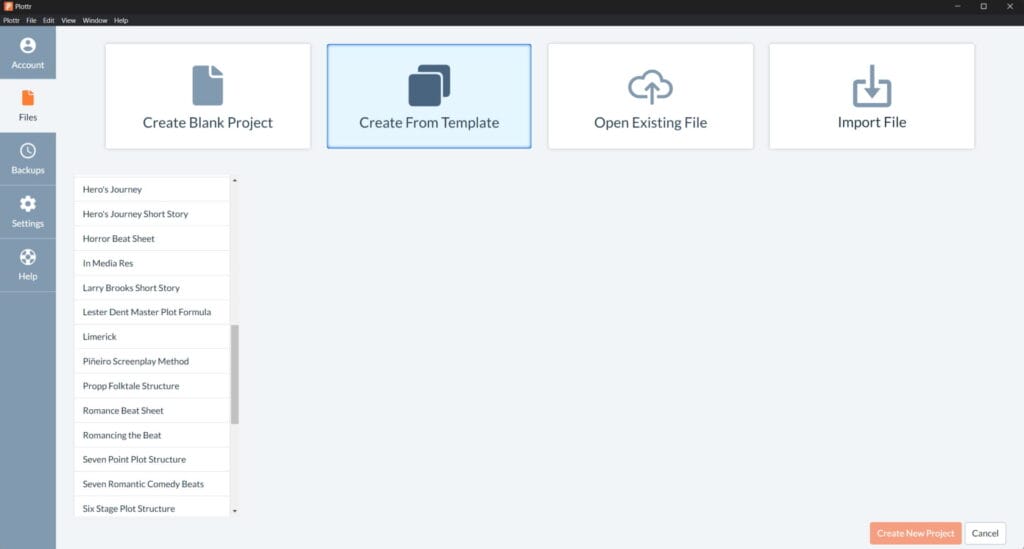
- Step 2: Scroll to the template Eight Sequences Method and select it, then click Create New Project
- Step 3: After you choose a name for your project, the template will open in Timeline view
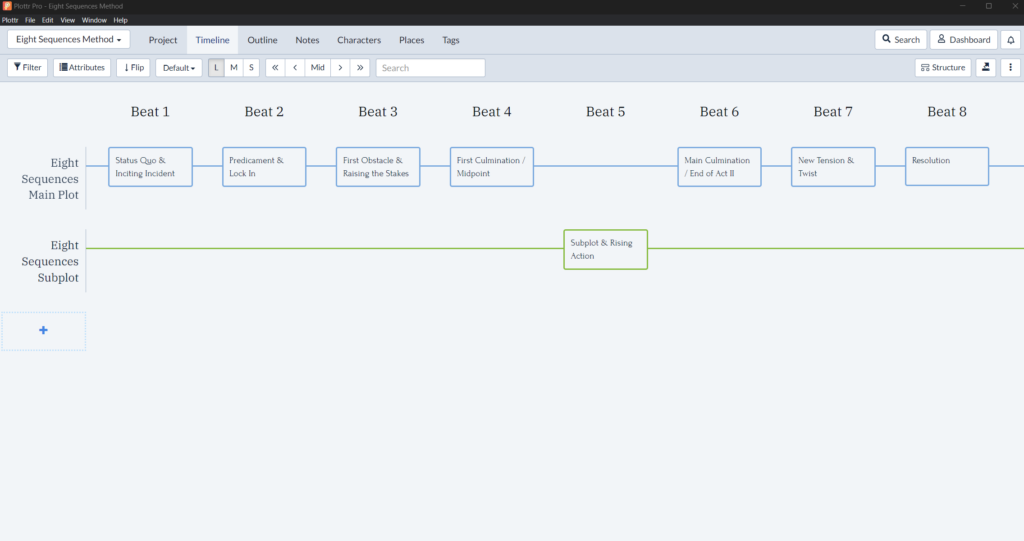
- Step 4: Click on any of the beat cards to start adding ideas. You can keep the guideline text or delete/replace it
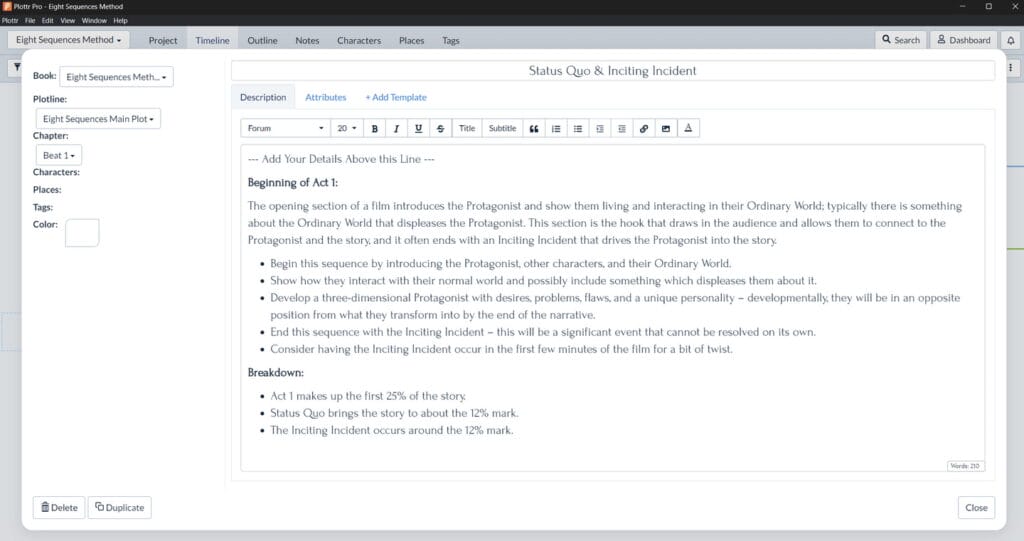
Did you know that plot templates in Plottr work well together? Use the Eight Sequences Method template with these others:
- Story Circle
- Villain’s Journey
- Story Spine
Get Into the Reel Action With Eight Sequences Plot Structure
Channel your inner Hollywood screenwriter and give the Eight Sequences Plot Structure a try. Get a free Plottr trial to begin and don’t hesitate to jump right in.
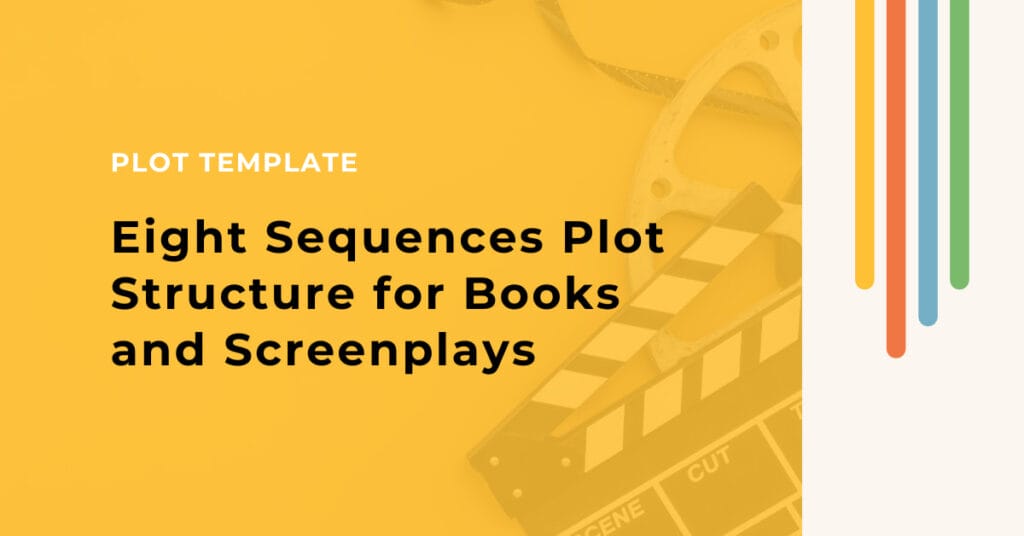
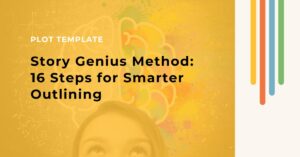
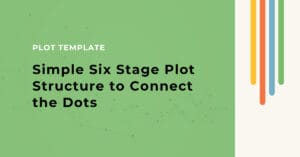
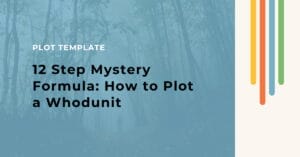




Comments